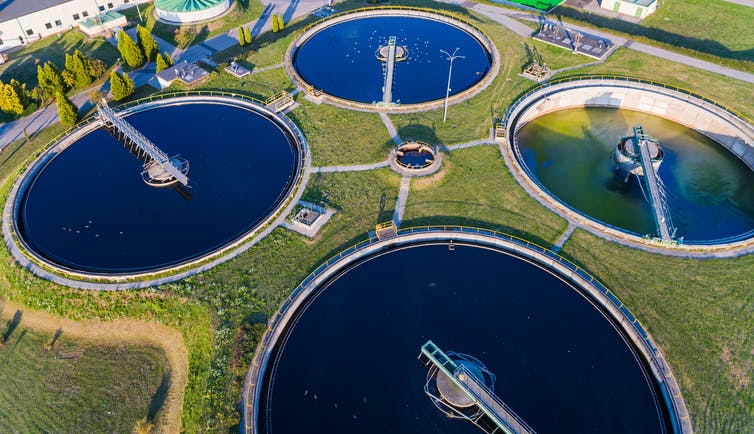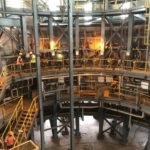(How to harness the power of biosolids to make hydrogen)
2020/9/15 オーストラリア連邦・ロイヤルメルボルン工科大学(RMIT)

・ RMIT が、バイオソリッド(下水汚泥)を利用した化学反応でバイオガスから水素を生成する技術を開発。
・ バイオソリッドとバイオガスの高度なアップサイクリングに注視した同技術では、水素の生成に必要な全材料が排水処理の現場で入手可能で高価な触媒も不要。また、バイオソリッドとバイオガス中の炭素を捕獲するため、ニアゼロエミッションの排水処理セクター実現の可能性も期待できる。
・ 既存の商用水素生成技術は資本集約的で CO2 の排出も多く、天然ガスに依存。循環型経済では、通常では廃棄処理される資源の最大限の活用を可能にする技術が必要。新技術では、サステナブル、コスト効果的、再生可能、効率的に、供給量に制限のない廃棄物を利用して水素を生成する。
・ 農業で肥料や土壌改良に利用されるバイオソリッド資源の約 30%が貯蔵または埋め立て処理されており、環境問題にもなっている。排水処理セクターは、バイオソリッドを高付加価値製品に転換する環境負荷のないサステナブルな技術の開発を試みている。
・ 新技術ではまず、バイオソリッドをバイオ炭に変換。同バイオ炭は重金属を含むため、バイオガスからの水素生成に適した触媒となる。バイオガスに類似したメタンリッチなガスを使用したベンチスケールの実験では、極めて効果的にガスを水素と酸素に分解することを確認した。
・ また、RMIT が開発し特許を取得した超高効率リアクタでも、同分解プロセスがカーボンナノ材料でコーティング処理した高付加価値のバイオ炭と共に水素を生成することを確認した。同バイオ炭は環境修復を含む多様なアプリケーションでの利用可能で、土壌改善やエネルギー貯蔵を促進する。
・ 同リアクタは、熱と物質の移動を最適化しながらモバイル性も向上させたもの。集積化をさらに進めることで、バイオソリッド・バイオガス転換プロセスを、エネルギー生産プロセスにすることも可能と考える。排水処理の他に、バイオマス、プラスチックやコーティング産業でのアプリケーションの可能性を見込む。
・ RMIT を拠点とする Australian Research Council Training Centre for Transformation of Australia’s
Biosolids Resource は、世界 20 カ国とオーストラリア、UK、US の大学、排水処理セクターおよび関連産業パートナーを含む国際的なパートナーの専門的知識を結集し、バイオソリッドの処理、輸送から法律制定、農業利用や土地管理まで、全プロセスにわたる有用な同資源の最適な処理方法の探求に努めている。
・ 本研究は、South East Water が支援した。ビクトリア州政府が所有する同社は、現在建設中のパイロットプラントにて同新技術の実証を予定している。
URL: https://www.rmit.edu.au/news/all-news/2020/sep/biosolids-hydrogen
<NEDO海外技術情報より>
(関連情報)
International Journal of Hydrogen Energy 掲載論文(アブストラクトのみ:全文は有料)
Production of hydrogen by catalytic methane decomposition using biochar and activated char
produced from biosolids pyrolysis
URL: https://www.sciencedirect.com/science/article/abs/pii/S0360319920330317?via%3Dihub
Abstract
Catalytic methane decomposition (CMD) was studied by employing biochar and activated char of biosolids’ origin under different reaction temperatures and methane concentrations. Higher reaction temperatures and lower inlet methane concentrations were found to be favourable for achieving higher methane conversion. A maximum initial methane conversion of 71.0 ± 2.5 and 65.2 ± 2.3% was observed for activated char and biochar, respectively at 900 °C and for 10% CH4 in N2 within the first 0.5 h of experiment. Active sites from oxygen containing carboxylic acid functional groups and smaller pore volume and pore diameter were attributed to assist in higher initial methane conversion for biochar and activated char respectively. However, rapid blockages of active sites and surfaces of biochar and activated char due to carbon formation have caused a rapid decline in methane conversion values in the first 0.5 h. Later on, crystalline nature of the newly formed carbon deposits due to their higher catalytic activity have stabilised methane conversion values for an extended experimental period of 6 h for both biochar and activated char. The final conversion values at the end of 6 h experiment with biochar and activated char at 900 °C and for 10% CH4 in N2, were found to be 40 ± 1.9 and 35 ± 1.6% respectively. Analysing carbon deposits in detail revealed that carbon nanofiber type structures were observed at 700 °C while nanospheres of carbon were found at 900 °C.



